Punta Colonet, B.C.
Purpose:
- Evaluate the efficiency of Macrobacter application.
- Assess production levels.
- Reduce fungicide applications for root protection.
- Improve plant development.
- Achieve higher production and fruit quality.
Company: Punta Colonet San Telmo, S.A. de C.V.
Area: 30 Ha.
Sample size: 1 Ha.
Crop and variety: Strawberry, Sayulita.
Crop stage: Planting.
Treatment:
- 15 total liters in 1 macro tunnel of 700 m.
- 3 liters at the start.
- 3 applications of 2 liters each week.
- 6 applications of 1 liter each week.
- Dissolved in 200 liters of water.

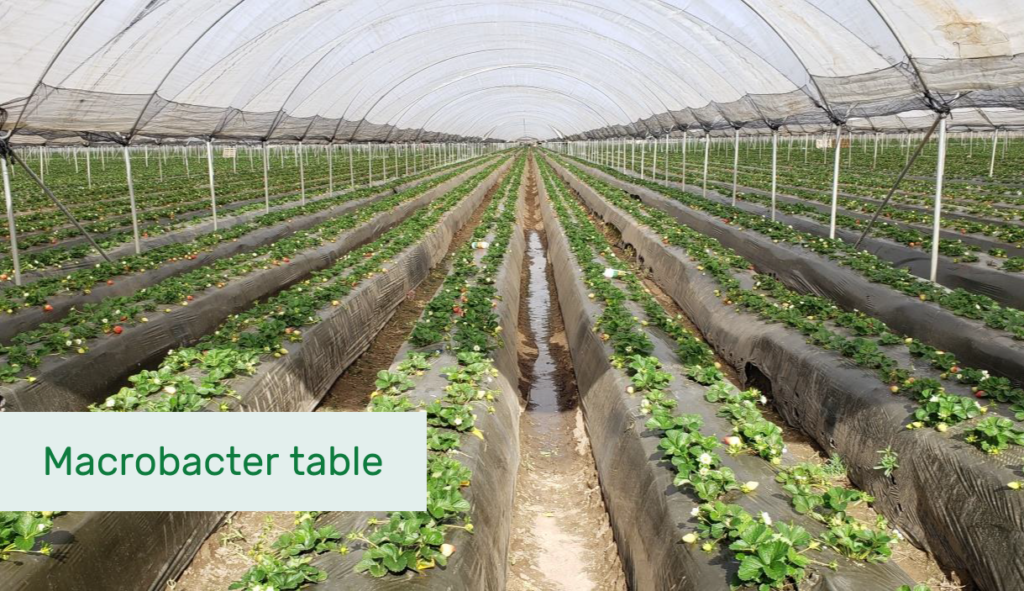
Comparison of the process between plants
- Lighter color in the control.
- Shorter petioles.
- Smaller plant.
- Smaller flowers.

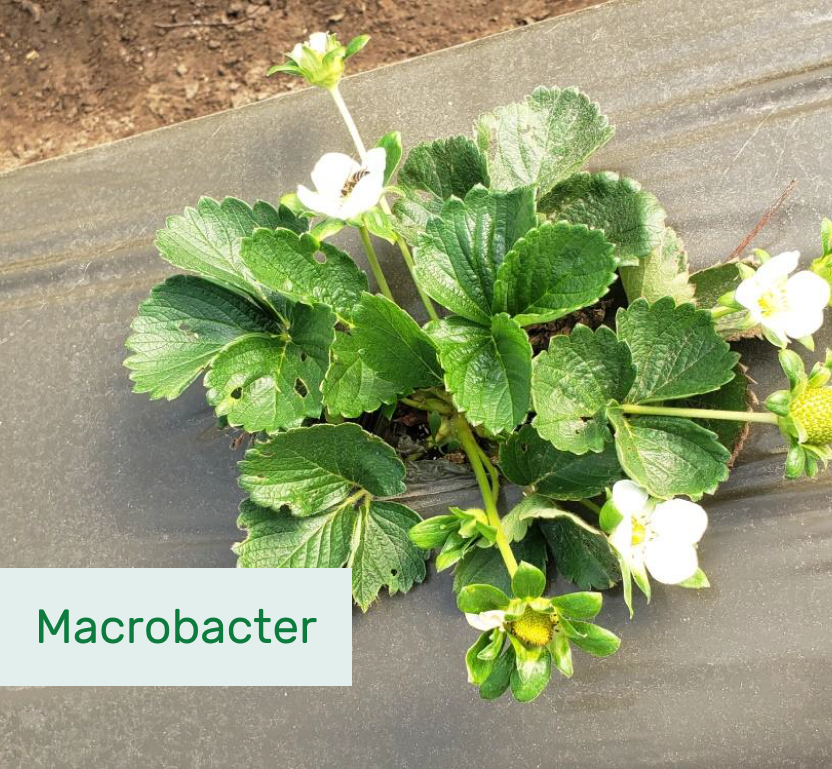
Comparison of fruit volume
There was harvesting in both plots. A difference in favor of the MACROBACTER plot was observed.


Initial Harvest Results
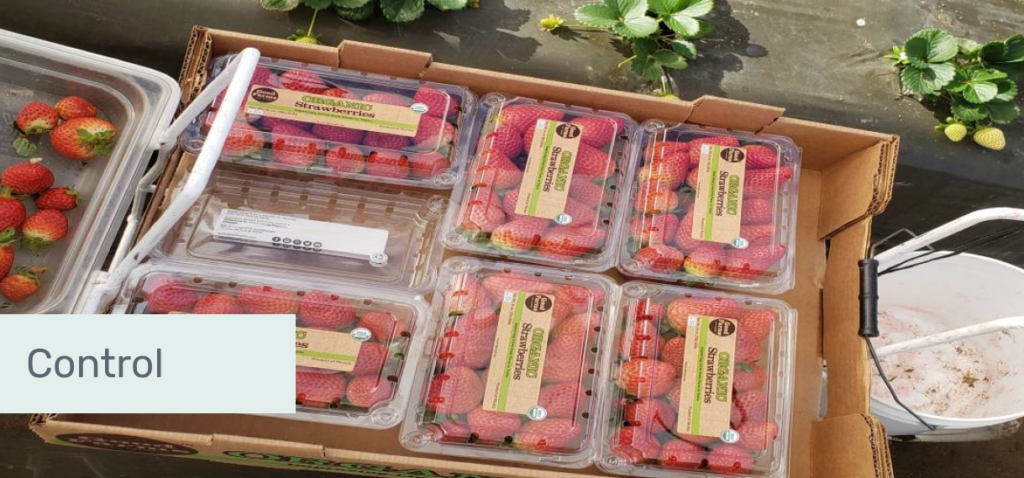
Sampling area:
7 rows of 100 meters each.
Photo specifications:
- 1st quality fruit: Cardboard tray.
- 2nd quality fruit: Plastic container.
- Waste fruit: White vessel.
Sampling area:
7 surcos de 100 m c/u.
Photo specifications:
- 1st quality fruit: 6 cardboard trays. Same as the control.
- 2nd quality fruit: More product than the control.
- White vessel with more product as waste, which counts as production.
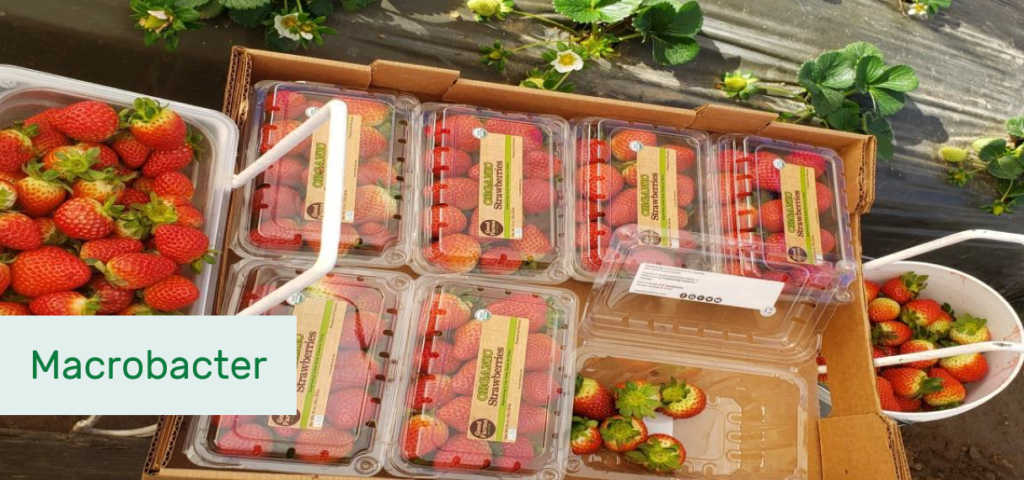
Harvest results no. 9

Fewer 1st quality trays, more 2nd quality product.
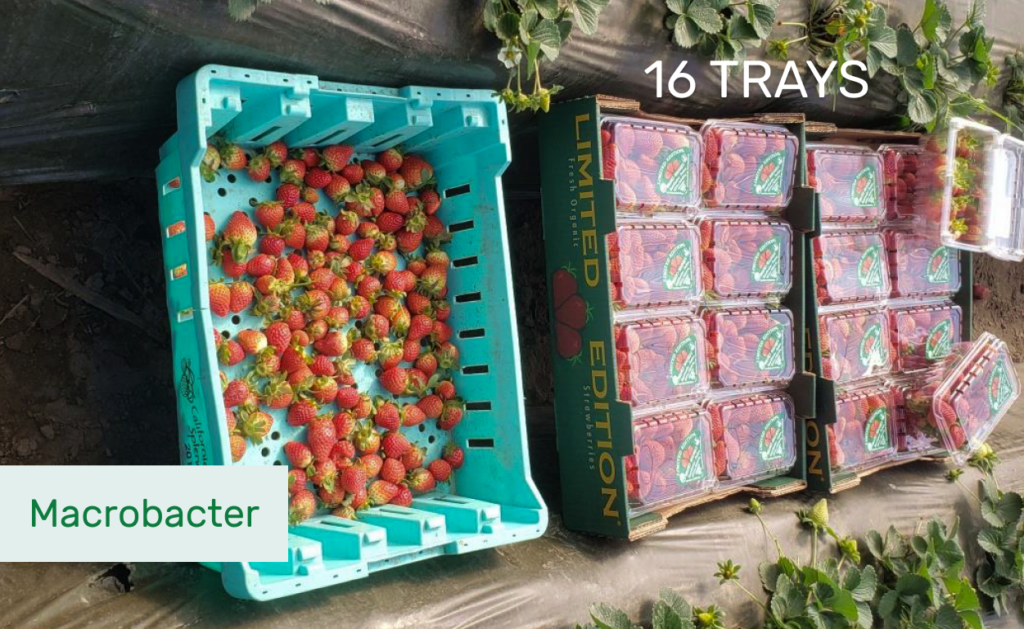
Fewer 2nd quality trays, more 1st quality product.
Harvest results no. 10

Fewer trays compared to Macrobacter.
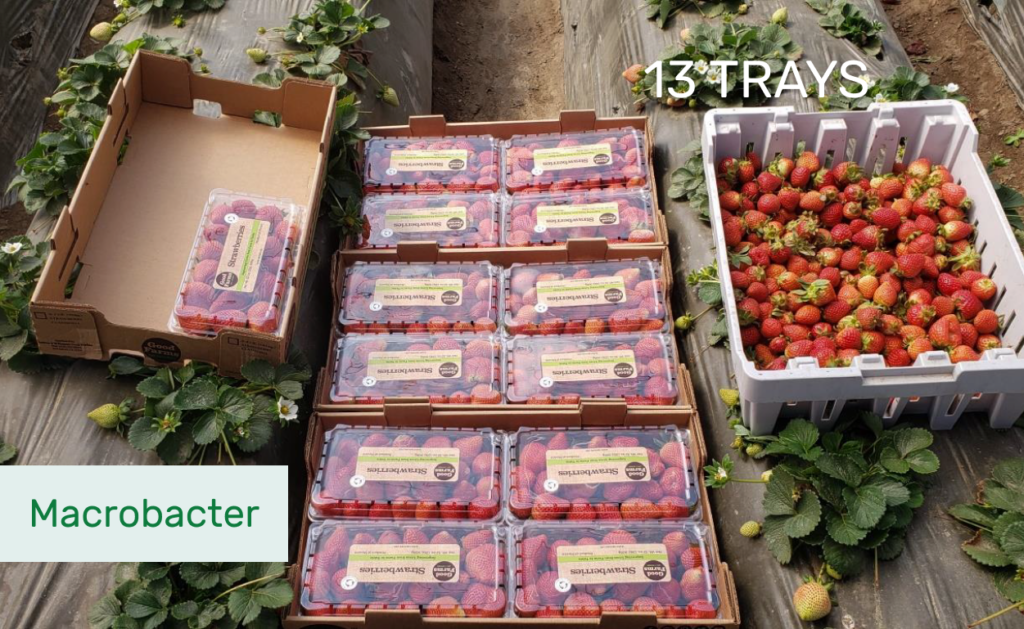
3 more 1st quality trays and lower 2nd quality production. Exceeding the production goal by 1 box per 700-meter tunnel.
Statistical evaluation
10 cuts to evaluate.
Elements to analyze:
- 1 macro tunnel for control.
- 1 MACROBACTER macro tunnel.
Variables to evaluate:
- First quality.
- Second quality.
- Third quality.
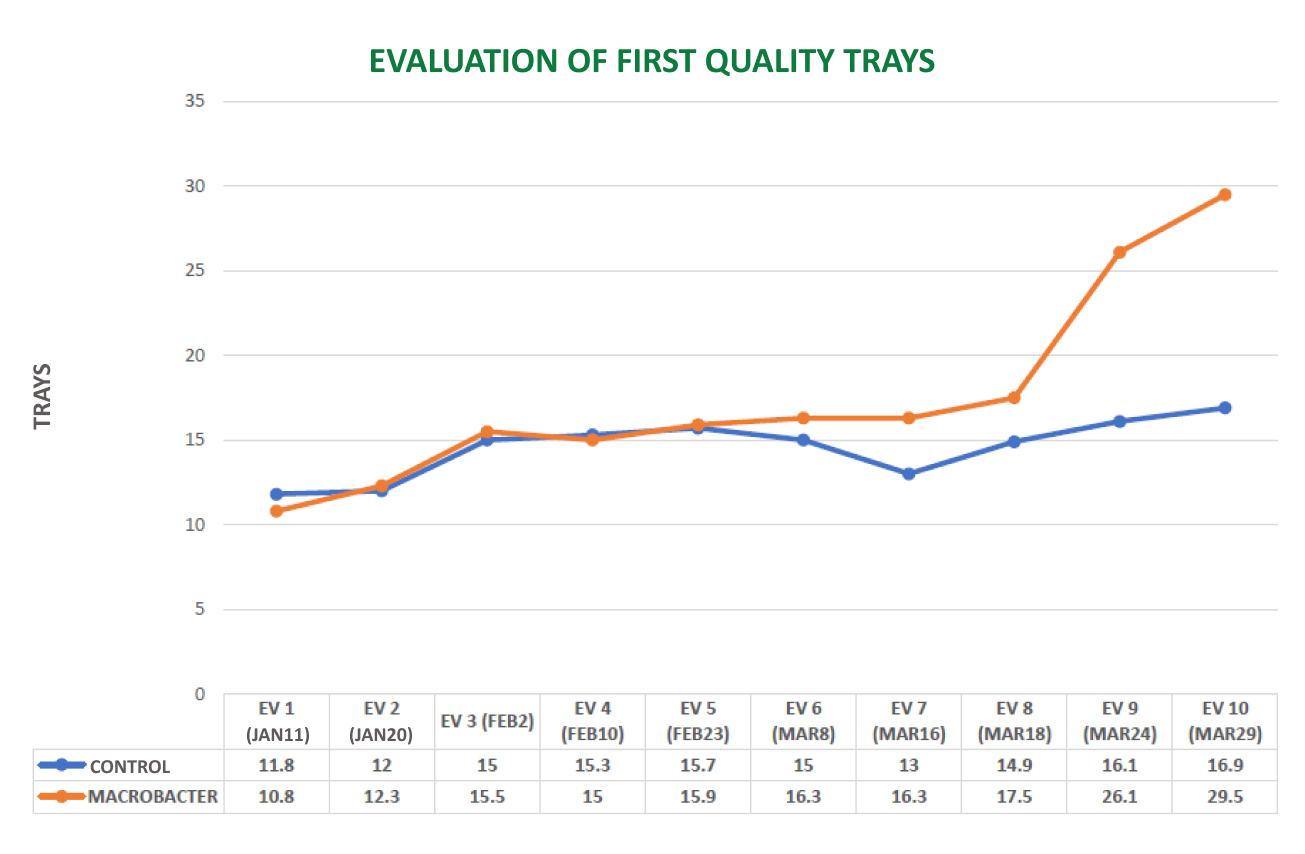
Graphic 1: Evaluation of harvest performance over 10 cuts, Macrobacter vs Control, in 1 lb trays, for First quality. We can observe the increasing production trend in the area treated with Macrobacter, which becomes significantly pronounced in the last 3 cuts of the evaluation.
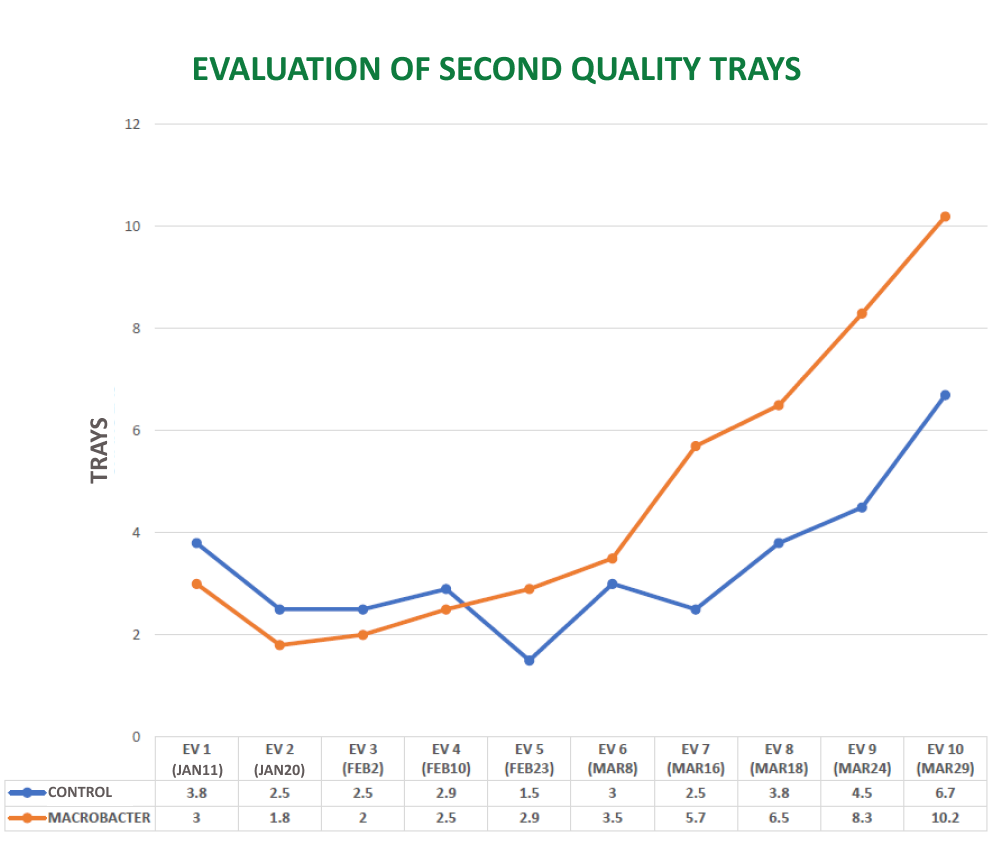
Graphic 2: In Second quality, the issue of performance differential is more evident here, with a marked trend in the curve starting from cut #6 onward.
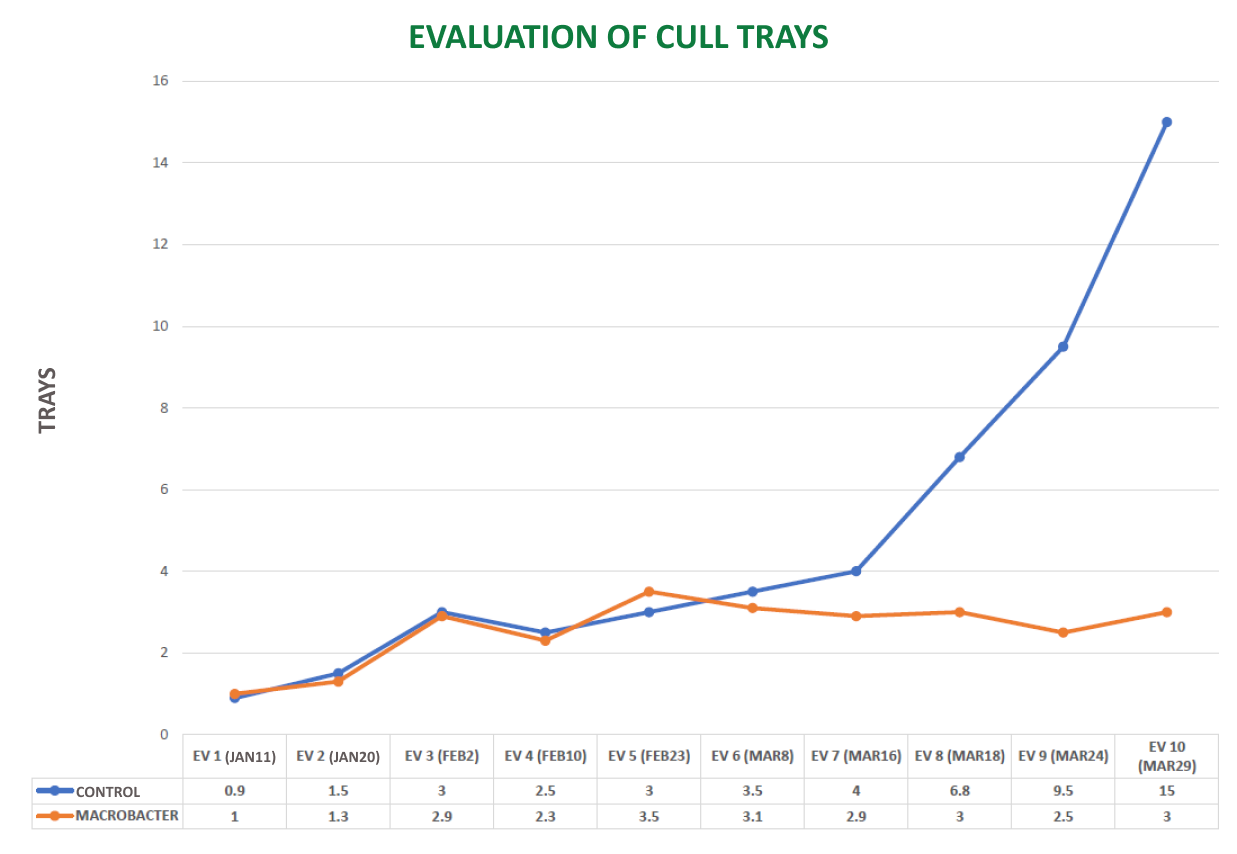
Graphic 3: Evaluation of harvest performance in CULL FRUITS, where Macrobacter was applied. The curve remained stable and did not increase in relation to the progress of the harvest.
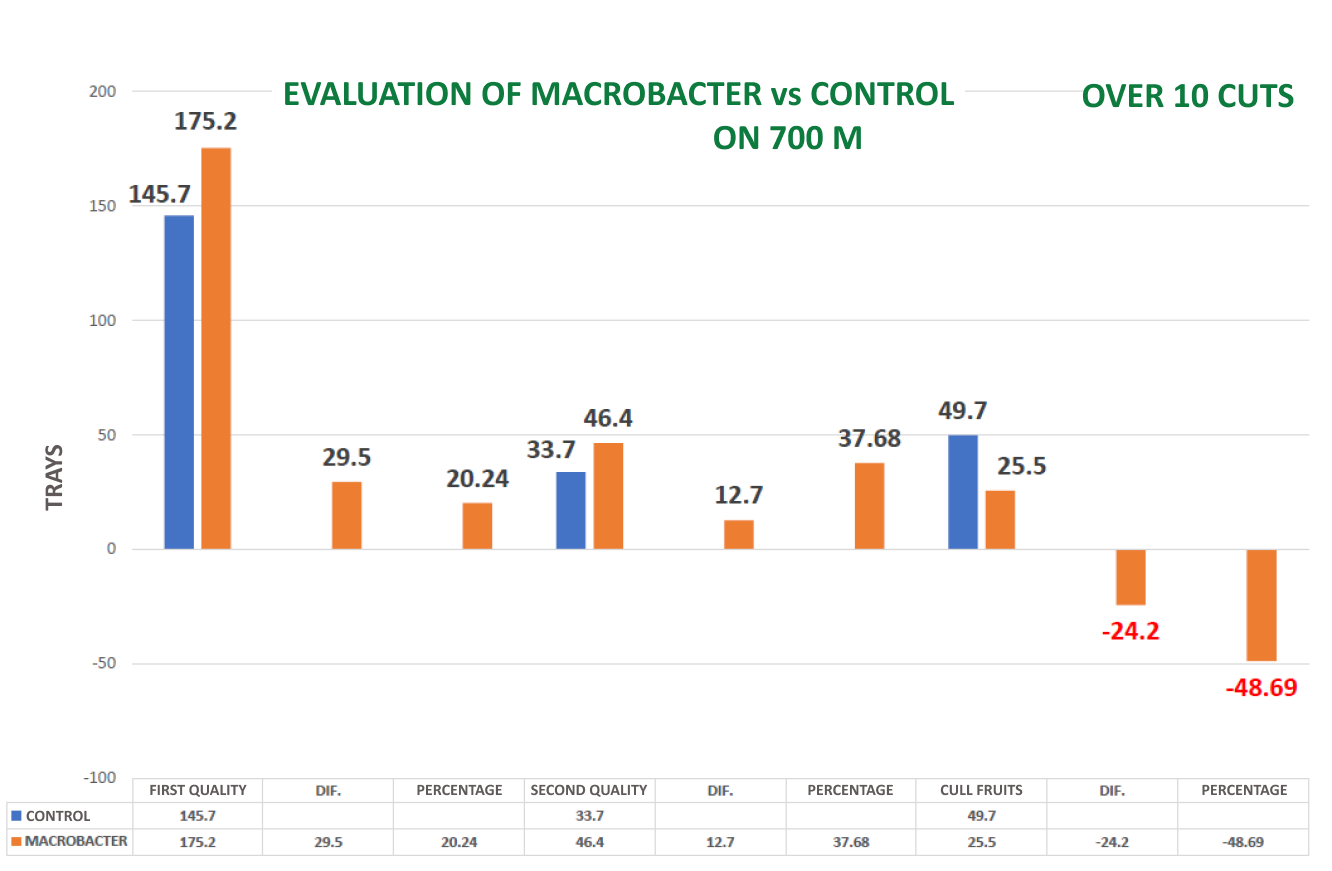
Graphic 4: Comparing the total boxes for each variable evaluated, there was a 20% increase in First quality, a 37% increase in Second quality, and 48% less Cull fruits, which means better quality production when applying Macrobacter to the crops.
Conclusions
- The overall evaluation results favor the Macrobacter plot with 15% more production.
- In the Macrobacter tunnel, plants showed greater vegetative development, better vigor and turgidity, better color, and generally better stature.
- A better soil balance was evident, providing better root performance.
- A higher number of fruiting crowns were highlighted.
- The resistance of the Macrobacter-treated plants was evident, as they showed their vigor and strength.
- It was noticeable during the tray filling that, in the control trays, up to 18 fruits were placed per tray, while in the MACROBACTER trays, only 14 fruits were needed.